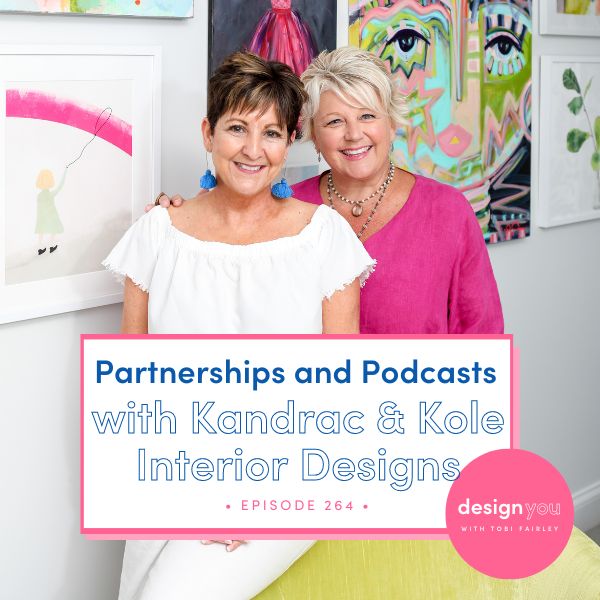
My guests this week have mastered the art of partnership, which is a hard thing to do in this industry. They’ve done this in their business and through their podcast. So today, we’re talking partnerships and podcasts with the ladies from Kandrac & Kole Interior Designs.
Joann Kandrac and Kelly Kole have been friends of mine for years and this episode has been a long time coming. They have a successful firm based in Atlanta, and they’ve established a well-known reputation over 18 years for their approachable, dynamic personalities and their use of one-of-a-kind custom design.
There are countless nightmare stories about partnerships out there, so tune in this week to discover the secrets to a solid partnership that works beautifully. Joann and Kelly are sharing how they’ve structured their business to financially protect each other, how they approach their joint projects, including their podcast, and all of their advice for building the kind of partnership that truly lasts and allows each person to play on the other’s strengths.
If you’re an interior designer or creative looking to up-level your business, I have something for you. It’s my Build a Better Business Guide because burnout, undercharging and the feast and famine cycle are rampant in the design industry. And there’s a better way to run your business. Click here to get my manifesto and guide that will have you on your way to a business with more ease, more joy, and more money.





